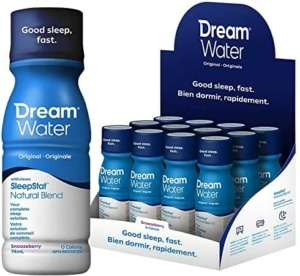Should You Use a PEO?
 We often discuss the challenges that entrepreneurs face that don’t have anything to do with why they got into business in the first place. Important but not necessarily thrilling topics like deciding between cash and accrual accounting or which financial ratios are best to understand your business don’t often move the needle for most entrepreneurs. If HR is another one of those non-desirables topics for you, it might be worth investigating if a Professional Employer Organization (PEO) makes sense for your business.
We often discuss the challenges that entrepreneurs face that don’t have anything to do with why they got into business in the first place. Important but not necessarily thrilling topics like deciding between cash and accrual accounting or which financial ratios are best to understand your business don’t often move the needle for most entrepreneurs. If HR is another one of those non-desirables topics for you, it might be worth investigating if a Professional Employer Organization (PEO) makes sense for your business.
A Co-Employer
You might have seen HR software that helps with a lot of the necessary paperwork that comes with having employees. A PEO takes that one step further, by essentially sharing liability with you as a co-employer. PEOs are most frequently used by small to medium sized businesses with as few as ten employees to as many as 300. A PEO can handle:
- Onboarding
- Benefits administration (health, investing, etc)
- Payroll and employee tax compliance
- Leaves of Absence/PTO
- Standard employee paperwork, like
- Workers’ compensation
- Unemployment insurance claims
- OSHA compliance
- COBRA
PEOs have to constantly keep abreast of new state and federal regulations so that’s something else you won’t have to worry about. By actually being the employer of record for your team they are able to use economies of scale to get good deals.
Some PEOs even help you with sourcing and hiring talent. This frees you up to focus to just:
- Create job descriptions and determine pay
- Manage and develop your team
It is said that companies that use PEOs have 10-14% less employee turnover, though that stat does come from their national association, so take it for what you will.
Cost and Downsides
Less paperwork? Sounds wonderful! Where do I sign? A few things to consider first.
Cost
There are hundreds of PEOs operating in the US at the moment and there’s no consistent pricing but some estimates offer:
- 2% of salaried and 6% of hourly workers’ gross pay per month
- $40-$160 per employee per month
Downsides
There’s not a lot of flexibility within PEOs for customization. They choose the third parties they deal with (again, benefitting from their economies of scale) and if you don’t like the choices you have in health care or investing, you don’t have alternatives other than going to another PEO.
It’s also inconvenient to cancel working with a PEO during a calendar year as you will then trigger multiple W-2s and tax forms as you move away from them as the employer of record and start with another PEO (or revert to your company being the employer of record).
There’s also the cost of a PEO itself, but often people move to one precisely because it’s less expensive (and less concern) than having a full-time HR person.
What to Consider
There is obviously a lot to consider in essentially partnering with a company to handle HR functions, but there are four issues we think are most important:
- Ask for references, particularly in your industry. You want to know what the experience of someone in your field has been like with this particular PEO.
- Find out if the PEO you are looking at has independently audited financial statements. There’s a lot to keep track of when your business is managing employees in multiple businesses across multiple states.
- Speaking of states, make sure that the PEO meets all the requirements your state has in place for such organizations.
- If you want to get really fussy, there’s a self-identifying IRS certification that only a small percentage of PEOs attain. People who voluntarily do more paperwork for the IRS? These are not people afraid of paperwork!
Are you thinking of using a PEO as part of growing your business or getting it ready for a sale? Want a second opinion as to whether it makes sense for you? Give us a call!

 David Lekach knew when he started Dream Water that he wasn’t just building a product, he was building a category. Thankfully, there was a preexisting product that had blazed a concept and delivery method that everyone understood: 5 Hour Energy’s little bottles were everywhere and people knew what they were used for. Dream Water wasn’t going to give you more energy, in fact, it was going to help you go to bed, but it was in that same familiar 2 ounce bottle.
David Lekach knew when he started Dream Water that he wasn’t just building a product, he was building a category. Thankfully, there was a preexisting product that had blazed a concept and delivery method that everyone understood: 5 Hour Energy’s little bottles were everywhere and people knew what they were used for. Dream Water wasn’t going to give you more energy, in fact, it was going to help you go to bed, but it was in that same familiar 2 ounce bottle.
 While we have been speaking about
While we have been speaking about 